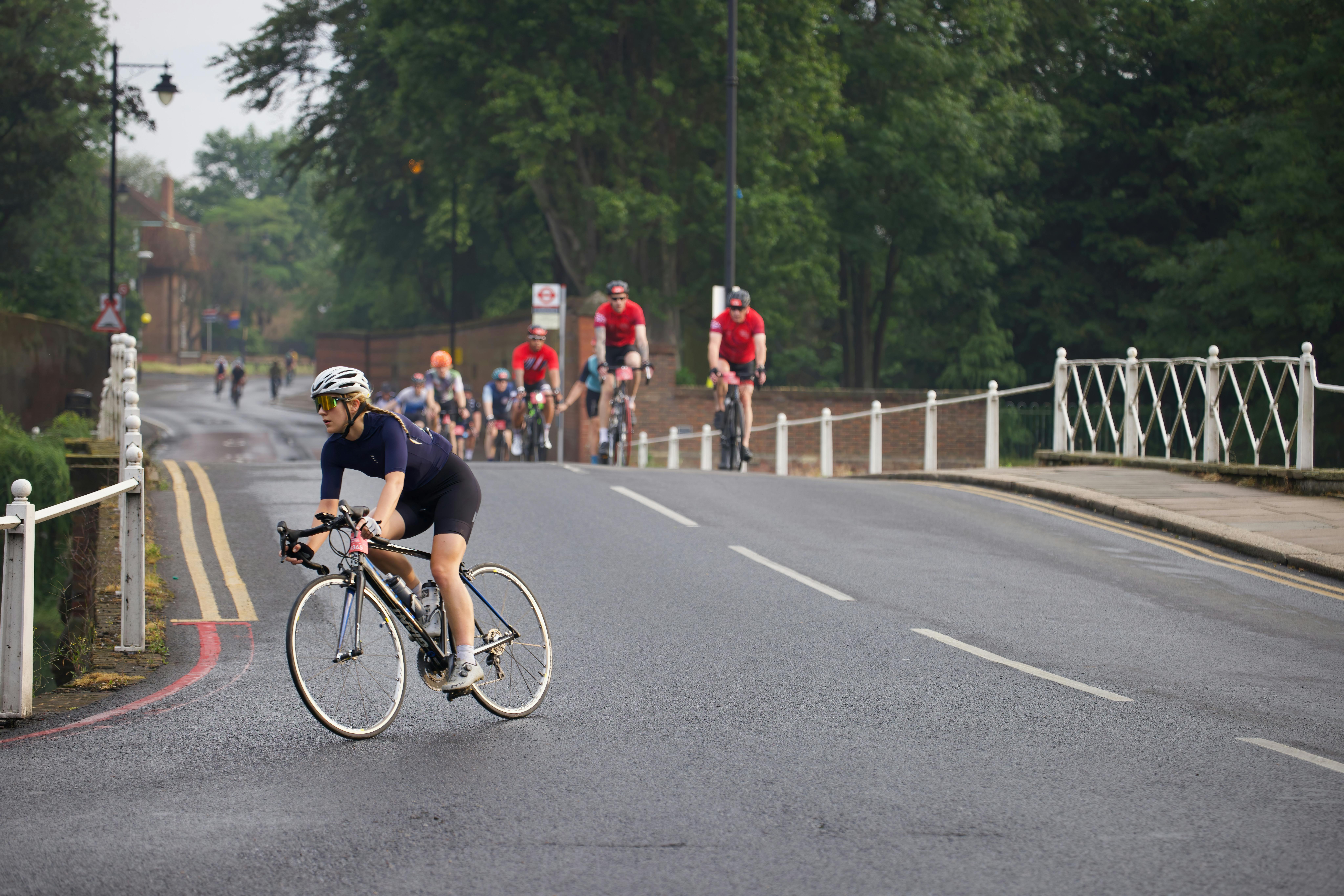Are you dreaming of running in the London Marathon? It’s one of the most prestigious events in the world, and qualifying can be a daunting challenge. Many runners wonder, what are the exact London Marathon qualifying times? Whether you’re a seasoned marathoner or a beginner looking to push your limits, knowing the qualifying standards is essential. The excitement of the race, combined with the stunning backdrop of London, makes it a must-do for any avid runner. But, did you know that the qualifying times vary depending on your age and gender? This can often lead to confusion and frustration for hopeful participants. In this blog post, we will explore the various qualifying times for the London Marathon, and provide tips on how to achieve them. Are you prepared to learn how to improve your personal best and secure your place in this iconic race? With the right training plan, motivation, and understanding of the qualifying times, your dream of conquering the London streets could soon become a reality. So, lace up your trainers, and let’s dive into everything you need to know about the London Marathon qualifying criteria!
Unlocking Your Potential: Understanding the London Marathon Qualifying Times for Every Age Group
The London Marathon is one of the most prestigious marathons in the world, attracting thousands of runners each year. If you’re looking to participate, understanding the London Marathon qualifying times is essential. Not only you need to know what times are required, but also how to achieve them.
In 2023, the London Marathon qualifying times for different age groups and genders are important to be aware of. Below is a table that outlines these times:
| Age Group | Male Qualifying Time | Female Qualifying Time |
|---|---|---|
| 18-40 | 2:45:00 | 3:15:00 |
| 41-49 | 2:50:00 | 3:20:00 |
| 50-59 | 3:00:00 | 3:30:00 |
| 60 and over | 3:30:00 | 4:00:00 |
The times above is the minimum required to secure a place in the race, but they can change slightly from year to year. Many runners train for months, or even years, to meet these challenges.
It’s really important to remember that achieving these London Marathon qualifying times isn’t just about speed. Consistency in training and a good strategy can help too. Runners often share their tips on social media or forums. For example, following a structured training plan, having a balanced diet, and getting enough rest is crucial.
Running clubs also play a big role in helping runners prepare. Joining a local club can provide guidance and motivation. They often organize group runs, sessions with coaches, and provide valuable feedback which can benefit those aiming for the London Marathon qualifying times.
Here’s a simple checklist for those who are thinking about qualifying:
- Assess your current running level
- Create a training plan
- Incorporate long runs and speed work
- Track your progress
- Stay injury-free
Each of these steps is equally important. Many runners often skip the assessment part, thinking they can just jump right into training. But it’s crucial to know where you starting from.
Nutrition also plays a vital role. It’s not just about eating anything that is in sight. A well-balanced diet can help improve performance. Here’s a quick overview of a sample daily diet for a marathon runner:
| Meal | Food Items |
|---|---|
| Breakfast | Oatmeal with fruits and nuts |
| Lunch | Grilled chicken with quinoa and steamed veg |
| Snack | Energy bars or bananas |
| Dinner | Salmon with brown rice and broccoli |
| Hydration | Plenty of water throughout the day |
This diet is designed to provide the energy and nutrients needed for long training sessions. Many runners find that meal prepping helps them stay on track.
Additionally, mental preparation is just as important as physical. Runners often practice mindfulness or visualization techniques to prepare themselves for race day. Some even keep a journal to track their thoughts and feelings throughout the training process.
The London Marathon qualifying times are not just arbitrary numbers. They represent the hard work, dedication, and passion that runners put into their training. Many runners share their stories of struggle and triumph, which can be incredibly inspiring.
In terms of gear, having the right equipment can make a significant difference. Here’s a list of essentials that every marathon runner should consider:
- Quality running shoes
- Moisture-wicking clothing
- GPS watch for tracking pace
- Hydration pack or belt
- Energy gels or chews for fuel
Investing in good gear can help prevent injuries and improve performance. Many runners often make the mistake of sticking with old shoes that have lost their support.
It’s also worth noting that even after achieving the London Marathon qualifying times, securing a spot in the race isn’t guaranteed. The event is extremely popular, and places are limited. The ballot system can be quite competitive.
For those who don’t make the cut, there’s always the option of running for charity. Many runners choose this path, as it not only allows them to participate but also helps raise valuable funds for various causes.
In summary, the journey to qualifying for the London Marathon is a challenging one, but with the right preparation, dedication, and mindset, it can be achieved. The London Marathon qualifying times serve as a benchmark for runners and a goal to strive for. Each step of the way brings its own set of challenges, but the sense of accomplishment at the finish line is worth every effort.
How to Prepare for the London Marathon: Essential Tips to Meet Your Qualifying Time
The London Marathon is one of the most iconic races in the world, attracting thousands of runners every year. In order to participate, many runners aim to achieve specific london marathon qualifying times. These times are set based on age and gender, ensuring a fair opportunity for all athletes wanting to enter the race.
To get into the nitty-gritty of it, let’s look at how the qualifying times are structured. Below is a table that outlines the london marathon qualifying times by age group for both men and women.
| Age Group | Men’s Qualifying Time | Women’s Qualifying Time |
|---|---|---|
| 18-39 | 2:45 | 3:00 |
| 40-44 | 2:50 | 3:05 |
| 45-49 | 2:55 | 3:10 |
| 50-54 | 3:00 | 3:20 |
| 55-59 | 3:10 | 3:30 |
| 60+ | 3:30 | 4:00 |
These london marathon qualifying times can seem daunting for many, but it’s important to remember that they are designed to ensure a competitive field. Many runners spend months or even years training to meet these standards.
One thing to consider is the fluctuation of these times due to weather conditions or race day circumstances. A runner might achieve a qualifying time one year, but if the weather is too hot or too cold, they might not reach it the next. This leads to an important aspect of marathon training — consistency.
Training plans often vary between individuals, but there are some common elements that can help a runner achieve their desired london marathon qualifying times. Here’s a listing of some key training tips:
Long Runs: These are essential for building endurance. Aim for a long run every week, gradually increasing the distance.
Speed Work: Incorporate interval training or tempo runs into your routine. This helps improve your pace and stamina.
Rest Days: Don’t underestimate the power of recovery. Muscles need time to repair, and rest is crucial.
Cross-Training: Engage in other forms of exercise, like cycling or swimming, to prevent injuries and enhance overall fitness.
Nutrition: Fuel your body with the right foods. A balanced diet of carbs, proteins, and healthy fats can make a big difference.
Hydration: Staying hydrated is vital, especially during long runs. Dehydration can severely impact performance.
When considering the london marathon qualifying times, it’s also worth noting that not all runners get in simply by meeting these times. The London Marathon uses a ballot system for entries, meaning that even if you qualify, there’s no guarantee of a spot. Runners often have to apply multiple times before they’re successful.
It’s also important to keep an eye on the changing times. For instance, the london marathon qualifying times have been adjusted in recent years to reflect the growing number of participants and the overall competitiveness of the event. This can sometimes lead to confusion among aspiring marathoners.
In 2022, for example, the times were slightly adjusted, causing a stir amongst the running community. Many felt that the new standards were too challenging, and discussions sparked on forums and social media platforms.
Moreover, there are charity entries available for those who may not meet the london marathon qualifying times. This allows runners to participate in the event while raising funds for a good cause. It’s a win-win situation, as runners get to experience the thrill of the marathon while contributing to meaningful charities.
Practical insights into achieving these times can also be found in various marathon training books or online resources. One popular training plan is the Hansons Marathon Method, which focuses on running more frequently and building mileage gradually. Many runners have found success using this method, swearing by its effectiveness in hitting their target london marathon qualifying times.
Finally, the camaraderie among runners is something to cherish. Many people form running clubs or groups to share their experiences and training tips. This not only motivates individuals but also creates a sense of community.
As you prepare for the marathon, remember that the journey is just as important as the finish line. Whether you’re aiming for a specific time or just wanting to cross that finish line, the experience of training and participating in the London Marathon is something you’ll treasure forever.
The Ultimate Guide to London Marathon Qualifying Standards: Can You Beat the Clock?
The London Marathon is one of the most prestigious marathon events in the world, attracting thousands of runners from all over. Many runners desire to participate in this iconic race, but they often need to meet specific London Marathon qualifying times to secure their spot. Understanding these times is crucial for anyone who wishes to run in this event.
First off, it’s important to highlight that the London Marathon qualifying times vary depending on your age and gender. Here a table illustrating the qualifying times for different categories:
| Age Category | Male Qualifying Time | Female Qualifying Time |
|---|---|---|
| 18-39 years | 2:45:00 | 3:00:00 |
| 40-44 years | 2:50:00 | 3:05:00 |
| 45-49 years | 2:55:00 | 3:10:00 |
| 50-54 years | 3:00:00 | 3:20:00 |
| 55-59 years | 3:05:00 | 3:30:00 |
| 60+ years | 3:15:00 | 3:40:00 |
As you can see, the times are quite competitive, and it requires a lot of training and dedication to achieve these London Marathon qualifying times. Many runners spend months, or even years, preparing for their chance to run in London.
To qualify, runners must achieve these times in an officially recognised marathon. This means, that races like the Berlin or Chicago Marathons can also help achieve the qualifying time needed for London. However, it’s essential to check the specific race’s eligibility before attempting to qualify.
Moreover, there are some special circumstances in which runners can gain entry. For example, charity places are available for those who might not meet the London Marathon qualifying times. If you raise a certain amount of money for a charity, you could secure your spot. This is a great opportunity for those who want to run but may not be able to meet the time requirements.
Training for the marathon is not just about running long distances. It also includes cross-training, nutrition, and recovery. Here’s a list of tips for aspiring marathon runners:
- Create a Training Plan: Consistency is key when training for a marathon. A well-structured plan could help you build up mileage gradually and avoid injuries.
- Incorporate Speed Work: Interval training can help improve your speed, which is crucial for meeting those London Marathon qualifying times.
- Focus on Nutrition: Eating a balanced diet is essential. Carbs, proteins, and fats all play a role in your energy levels.
- Don’t Forget Recovery: Rest days and proper sleep are just as important as your training runs.
- Join a Running Group: Training with others can provide motivation and support.
In addition to the official qualifying times, runners should be aware of the application process. Runners usually apply for the London Marathon in the spring, and the demand is incredibly high. So, if you are planning on qualifying, it’s best to start working towards your goal as soon as possible.
The London Marathon qualifying times can change from year to year. In 2023, for instance, the times were slightly adjusted, leading to some discussions within the running community. The importance of these qualifications are not just about getting into the race; they also reflect the level of commitment and hard work that goes into marathon running.
There are also some fun facts about the London Marathon. Did you know that it was first held in 1981? Since then, it has grown in popularity, and now it’s one of the largest marathons in the world. The event is not just about the race; it’s also a celebration of community, charity, and sport. Many runners dress up in costumes, adding an element of fun to the day.
For those who are serious about meeting the London Marathon qualifying times, here are some common mistakes to avoid:
- Overtraining: It can be tempting to push yourself too hard, but this often leads to injuries.
- Ignoring Nutrition: Many runners underestimate the importance of what they eat. Fuel your body properly.
- Skipping the Long Runs: Long runs are essential for building endurance.
- Forgetting to Stretch: Stretching can help you maintain flexibility and prevent injuries.
Training for the London Marathon can be a daunting task, but it’s also incredibly rewarding. The sense of achievement when you cross that finish line is something that’s hard to put into words. Whether you are aiming for the London Marathon qualifying times or just aiming to finish, every step you take contributes to your journey.
In summary, the London Marathon qualifying times are challenging but achievable with the right preparation and
Training Plans That Work: Boosting Your Speed to Achieve London Marathon Qualifying Times
The London Marathon is one of the most prestigious running events in the world, attracting thousands of runners each year. To get a place, many runners aim for specific London marathon qualifying times which can be quite challenging. There’s a lot of details to consider for anyone looking to qualify.
Firstly, it’s important to know the qualifying times, they varies depending on age and gender. Here’s a breakdown of the current qualifying times for the London Marathon:
| Age Group | Male Qualifying Time | Female Qualifying Time |
|---|---|---|
| 18-40 | 2:45:00 | 3:00:00 |
| 41-49 | 2:50:00 | 3:05:00 |
| 50-59 | 3:05:00 | 3:30:00 |
| 60+ | 3:30:00 | 4:00:00 |
These London marathon qualifying times are set to ensure that only those who have trained rigorously and can sustain a high level of performance get to run. It means that runners must consistently push themselves to meet these high standards.
Moreover, many runners often train for months or even years, aiming to meet their goal. The atmosphere during the marathon is electrifying, but before that, it takes a lot of preparation. Nutrition, training schedules, and rest are just few factors that impact the results.
In addition, there are other ways to secure a spot in this iconic race. Besides qualifying through time, runners can also run for charities. This method allows runners who may not meet the London marathon qualifying times to still participate by raising money for worthy causes.
Some important tips for those aiming to qualify include:
- Set Realistic Goals: It’s crucial to understand your current fitness level and set achievable targets.
- Proper Training: Following a structured training plan is essential. Many runners find it helpful to join a running club.
- Nutrition Matters: Eating a balanced diet, rich in carbs and proteins, can greatly impact performance.
- Rest and Recovery: Overtraining can lead to injuries, so taking rest days is equally important.
- Race Pace Practice: Incorporating race pace runs into your training can help you get used to the pace you’ll need on race day.
There are also common mistakes that runners make when trying to achieve their London marathon qualifying times. Here’s a list of those pitfalls:
- Not following a training plan
- Ignoring injuries or pain
- Not fueling properly before and during long runs
- Failing to taper before the race
- Underestimating the marathon distance
The London Marathon also has a unique atmosphere on race day. With thousands of spectators lining the streets, it gives runners a boost of energy. Many runners have shared that the support from the crowd is what keeps them going when they feel like quitting.
If you’re serious about qualifying, timing your races is key. Many runners participate in other marathons before London to gauge their readiness. Here’s a list of popular marathons that can help you prepare:
- Berlin Marathon
- Amsterdam Marathon
- New York City Marathon
- Boston Marathon
Each of these events has their own London marathon qualifying times that are similar, so it’s a good way to check if you’re on track.
Training for a marathon isn’t just about physical strength; it also involves mental toughness. Many runners find that visualization techniques helps them prepare mentally for the race. Imagining crossing the finish line can be a powerful motivator.
Lastly, it’s crucial to register early. If you’ve achieved your qualifying time, ensure you keep an eye on registration dates. The London Marathon tends to fill up quickly, and you don’t want to miss out because of a missed deadline.
In summary, aiming for the London marathon qualifying times is a journey that requires dedication, perseverance, and a solid strategy. Whether you’re trying to qualify through time or fundraising for charity, every step counts towards that ultimate goal. Good luck to everyone taking on this challenge!
Real Stories from Runners: How They Conquered London Marathon Qualifying Times and You Can Too!
Are you thinking about running the London Marathon? Well, let me tell you, it’s not just about putting on your trainers and hitting the pavement. If you’re aiming to qualify, then understanding the London Marathon qualifying times is crucial. Many runners, both novice and experienced, are often confused on what these times actualy mean and how they impact their chances of getting a spot in the race.
First off, the qualifying times for the London Marathon can vary depending on age and gender. It’s important to know that these times are not set in stone and can change year to year. Below is a table that outlines the current qualifying times:
| Age Group | Male Qualifying Time | Female Qualifying Time |
|---|---|---|
| 18-39 | 2:45 | 3:15 |
| 40-44 | 2:50 | 3:20 |
| 45-49 | 2:55 | 3:30 |
| 50-54 | 3:00 | 3:40 |
| 55-59 | 3:10 | 3:55 |
| 60+ | 3:30 | 4:00 |
These times are not just guidelines, they are the benchmark for many serious runners. However, getting these times isn’t as simple as it seems. Many runners train hard but still struggle to meet the London Marathon qualifying times.
Some of you might asking, “How do I ensure I meet these times?” Well, to start, you need to develop a proper training plan. Incorporating speed work, long runs, and recovery is essential. Below is a list of tips that could help you improve your time:
- Create a structured training plan – A good plan should include a variety of workouts.
- Join a running club – Being part of a community can provide motivation and tips.
- Focus on nutrition – What you eat can greatly affects your performance.
- Get proper gear – Having the right shoes and clothing is crucial for comfort.
- Rest and recovery – Don’t underestimate the power of rest days.
In addition to understanding these times, it’s also important to know how to submit your qualifying time once you’ve achieved it. Typically, you will need to provide proof of your time with your application. This may include race results or a verification from a race director. The London Marathon qualifying times must be from a recognised event.
Many runners often feel overwhelmed by the idea of qualifying. It can seem like a daunting task, but remember, it’s about personal achievement too. Perhaps you’re not trying to break any records, but simply want to finish the race. That’s perfectly fine. The qualifying times for the London Marathon are just one way to enter, but not the only way.
There are charity places available as well. While these often require you to raise a certain amount of money, they can be a great alternative for those who might not meet the time requirements.
Another thing to consider is the atmosphere of the London Marathon itself. Thousands of runners take to the streets, and the support from the crowd is something that can’t be replicated. Many runners say that the cheering and energy of the crowd pushes them to run faster than they ever thought possible.
If you’re still unsure how to approach the London Marathon qualifying times, consider talking to a coach or a more experienced runner. They can provide insights and advice that could help you succeed.
Lastly, don’t forget that every runner has their own journey. Some might breeze past the qualifying times for the London Marathon, while others might struggle. Each experience is unique and valuable.
So, set your sights on those times, but remember to enjoy the process. Running is as much about the journey as it is about the destination.
In the end, whether you qualify or run for a charity, what matters is your passion for running. So lace up your trainers, get out there, and give it your all!
Conclusion
In conclusion, qualifying for the London Marathon is an aspiration for many runners, and understanding the qualifying times is crucial for those aiming to secure a coveted spot. The required times vary by age and gender, reflecting the competitive nature of this iconic event. We explored how achieving these times not only showcases your dedication and training but also enhances the overall marathon experience. Additionally, we discussed various strategies for improving your running performance, such as tailored training plans, nutrition, and mental preparation. Whether you are a seasoned marathoner or a newcomer, setting your sights on these qualifying benchmarks can provide motivation and focus. As you prepare for your next race, consider setting a qualifying time goal and charting your progress. Remember, every step you take brings you closer to the exhilarating experience of crossing the finish line at the London Marathon. Start your journey today!













